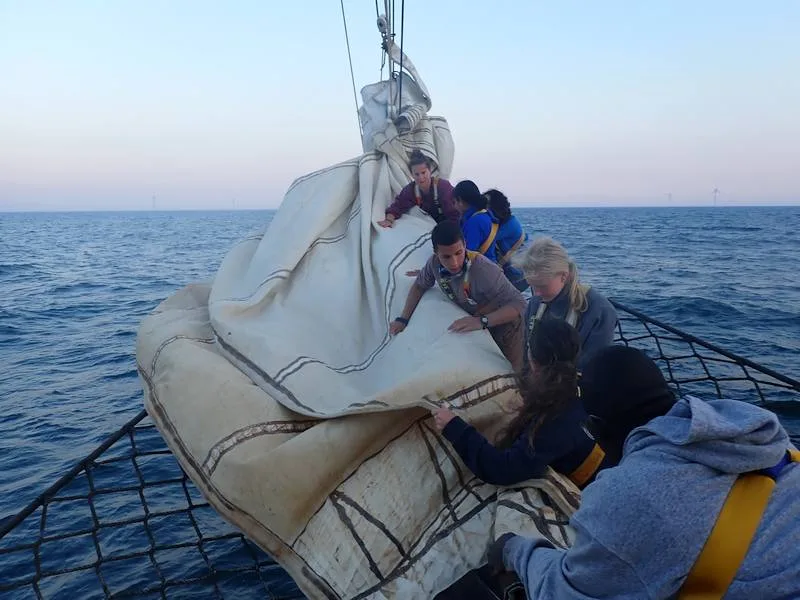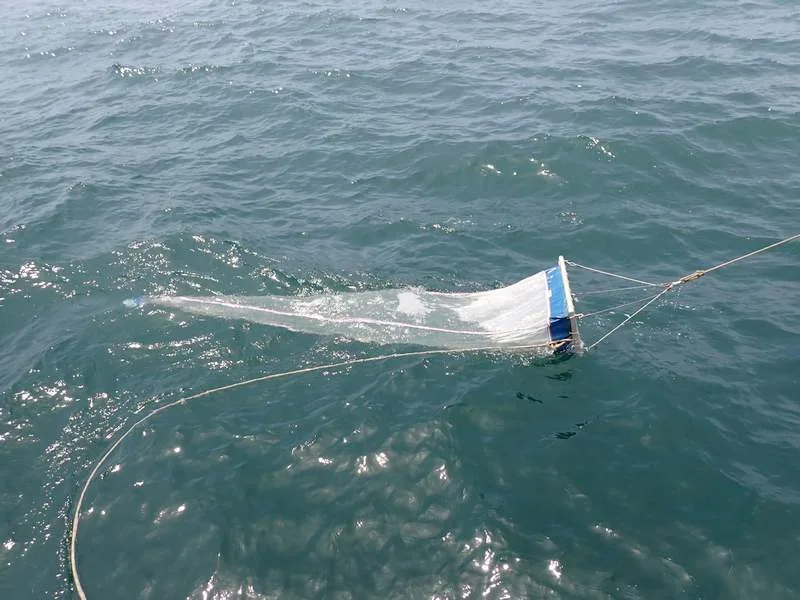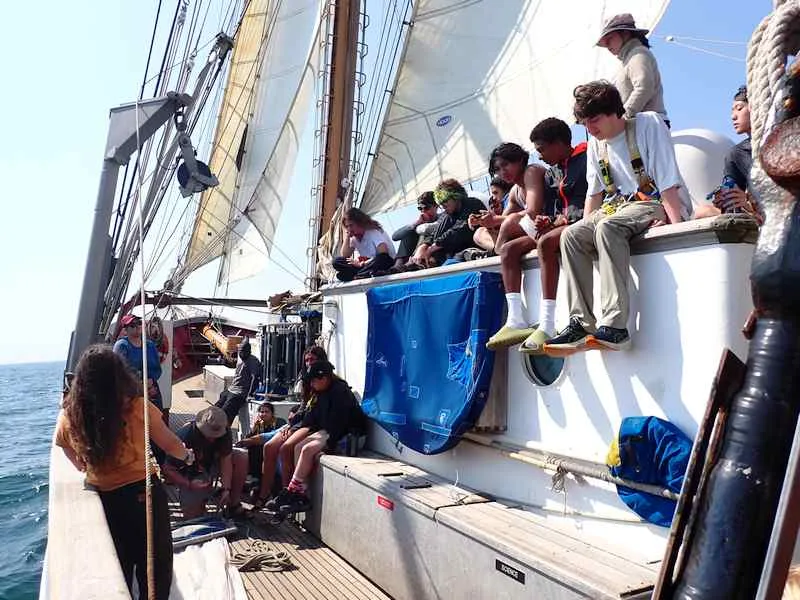Programs Blog
All in a Day’s Worth

Thursday, July 3rd 2025
Noon Position: (Lat and Long): 41deg 21’N x 070deg 59’W
Ship Heading (degrees): 150 degrees
Ship Speed (knots): 4 knots most of the day
Log (nm): 35.7nm
Weather / Wind / Sail Plan (from 1300 Watch Change): Sunny, lite breeze midday but that would change later in the day.
Description of location: Rhode Island Sound near the wind farms.
Our first watch started at the early hour of 1 am! We are now on our second watch of the day, which will be from 1900-0100. We were anchored during our dawn watch (0100-0700), so our team took two hour shifts on watch. Starting on dawn watch meant that, for most of the day, we were on break! We took this time for some much needed sleep, mainly waking up for meals. Although the morning was foggy, by midday, the sun had come out and the incessant fog horn, sounding every two minutes, interrupting many conversations and generally being a nuisance yet necessary for our safety, was finally turned off. Since morning we have been sailing past the Menemsha Bight and are currently making our way into the Rhode Island Sound. Unfortunately, some of our crew was hit with a wave of sea-sickness (shout out to Bethany for all the help!). When A watch had been on deck, taking over for us at 0700, they got to deploy a multitude of science equipment, including the Neuston Tow, CTD, Secchi Disk, and more! During our class, pictured below, we all learned how do deploy the Neuston Tow, which is happening again right this moment (10:42 PM July 3rd). During that class we also learned how to Gybe, which is when the Stern of our boat goes through the wind (there is also a maneuver called a ‘tack,’ where the bow of the boat goes through the wind, however the Cramer does not tack very well and tacking requires a lot more speed (but we did execute a successful tack earlier in the day)). We learned that Gybing is essential for deploying the Neuston Tow, because it allows us to backwind our sails, slowing the boat down enough that the net can collect samples. (Right now we have just turned the engine on due to the lack of wind (2304). As part of our daily watches, one of our tasks is to perform an hourly boat check. This includes ensuring our life rafts are in place, checking for fire, and checking the engine room. This is our first line of defense against all emergencies, so that the drills we were practicing yesterday do not become a reality.
Sailing soundly into the silent night, fueled by rice krispy treats, courtesy of the Galley, we are now standing the night watch. Earlier into our watch, we experienced a slight storm scare, with the waves really picking up, at around 1930. Due to the high winds, we took down the Jib, where some of our team got to walk on the bowsprit. Later, at around 2100, there was another large increase in wind, so we took down the main sail and are currently running under the power of our two staysails. There was talk of putting up the square sails like those old pictures of pirate ships.
Cleaning the galley was truly a struggle, with Alex toiling away for around an hour washing dishes, and then being replaced by Rhia, Abdoulie and Lila who were then replaced by Facundo and Claire, with the entire operation not being finished until around 2130, having been started around 1900.
We caught some speed during our sail, reaching 10 knots! We passed by the windmill farms and saw some birds flying by. In the science lab, we also collected water samples to test chlorophyll and phosphate.
The sun set was so beautiful, and right now, the stars can be seen clearly across the sky. We also heard some whales in the water (reported by Facundo on lookout 0000-0100).
We will be on watch until 1 am…good night!
– much love,
Rhia, Lila, Alex, Landon, Facundo, Claire, and Abdoulie (C watch)


Recent Posts from the Ships
- Ocean Classroom 2024-A collaborative high school program with Proctor Academy
- Collaborations and Long-term Commitments: SEA’s Caribbean Reef Program Sets a Course for Coastal Programs that Compliment Shipboard Experiences.
- Sea Education Association students prepare for life underway using state of the art nautical simulation from Wartsila Corporation.
- SEA Writer 2022, Magazines From the Summer SEA Quest Students
- Technology@SEA: Upgrades Allow Insight into Ocean Depths
Programs
- Gap Year
- Ocean Exploration
- High School
- Science at SEA
- SEA Expedition
- SEAScape
- Pre-College
- Proctor Ocean Classroom
- Protecting the Phoenix Islands
- SPICE
- Stanford@SEA
- Undergraduate
- Climate and Society
- Climate Change and Coastal Resilience
- Coral Reef Conservation
- Marine Biodiversity and Conservation
- MBL
- Ocean Exploration: Plastics
- Ocean Policy: Marine Protected Areas
- Oceans and Climate
- Pacific Reef Expedition
- The Global Ocean: Hawai'i
- The Global Ocean: New Zealand